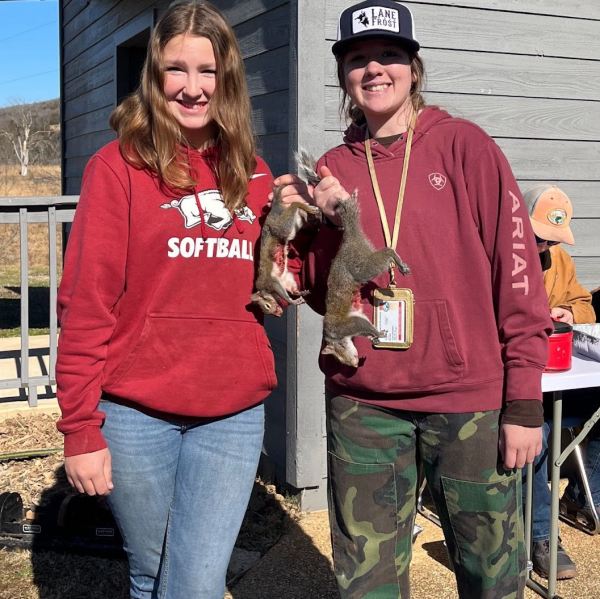By Glen Wunderlich
Charter Member Professional Outdoor Media Association (POMA)
Small game hunters finally have some snow to celebrate. While the white stuff makes for a stark contrast between cover and wildlife, it also poses distinct challenges afield. Obviously, hunters need to balance the need to stay warm, while being able to traverse the land without getting over-heated from bulky clothes. Gloved hands may mean fingers remain limber but the added bulk could mean they don’t fit into the firearm’s trigger guard. Here are a few more considerations to deal with the cold elements upon us.

Squirrels Taken With Vintage Mossberg Rimfire Rifle
Frigid air adds a vigorous test of one’s dedication to hunt, but it can also affect the performance of any firearm. As an example, a friend had prepared to hunt deer with his inline muzzleloader by giving the rifle a “good” cleaning after a successful sight-in session. When the moment of truth had arrived afield, he pulled the trigger and the gun did not go boom like it did each time at the range.
It was soon discovered that the hapless hunter had applied too much oil and grease to the moving parts, which in turn had made the lubricants more viscous. Simply stated, the firing pin met too much resistance from the excessive lubricants and failed to strike the primer properly in the freezing air.
During cold weather, firing pins can be the source of common problems, as cold makes springs harder to compress and function properly. Cold grease can actually slow the travel of the firing pin to the point of failure.
The winter hunter should remove the firearm’s bolt and remove all the grease and oil with a firearm-friendly solvent such as alcohol. Semi-auto actions can also suffer from over-lubrication and may not function in cold conditions, as a result.
Trigger mechanisms are also susceptible to the same issues for the same reasons. My favorite means to clean triggers and other moving parts is to blast them with a product such as Birchwood Casey’s Gun Scrubber aerosol.
Muzzle covers are also a good idea to keep snow and mud from plugging up the bore after a slip and fall incident. This dangerous condition can be avoided by simply placing a piece of tape over the muzzle or by the use of commercially available protectors. An ounce of prevention can eliminate the possibility of a burst or bulged barrel that’ll cost more than a missed opportunity at a rabbit.
Another source of malfunctions can arise from magazines that are not scrupulously cleaned, as well. Aerosol cleaners are a good choice, especially if disassembly of magazines is to be avoided.
If your chosen firearm is scoped, don’t forget to install some scope covers to protect the lenses. They come in various forms, but this bit of insurance protects expensive glass, and with a quick flip of the finger, the hunter will have a clear and instantaneous view of the target.
If you want to clean your gun, do so after the hunt. However, if you’ve left any type of oil within the bore, make a written note and attach it to the firearm so that it can be removed before use again. The bore should be squeaky clean and dry before use.
When it comes to rimfire rifles, I tend to use different ammo depending on the gun and game being pursued. If I’ve sighted in a firearm with specific ammo, I’ll also add a note to the tag indicating what ammo was used, so that the same ammo is loaded for hunting.
With some preventive maintenance, one can reasonably assume that firearms will perform as designed no matter what Mother Nature throws at us.









